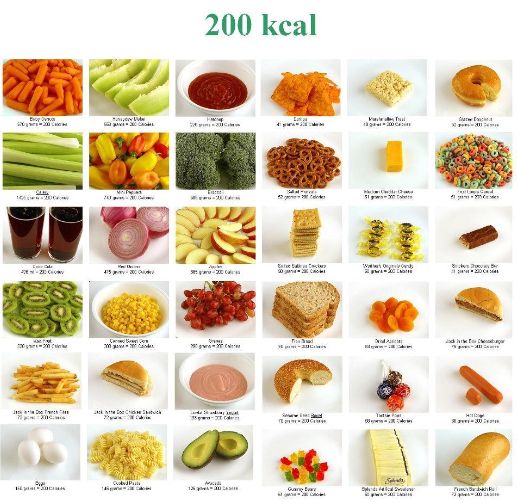BOURSESSENEGAL – When it comes to maintaining a healthy lifestyle, understanding kcal is crucial. Kilocalories, commonly referred to as , serve as a standard measurement of energy in food. Knowing how to manage your intake can help you achieve your health goals, whether you aim to lose weight, gain muscle, or simply maintain your current weight. In this guide, we’ll explore what means, how it affects your body, and practical tips for managing your energy intake.
What Are Kcal?
Kcal is a unit of energy. More specifically, one kilocalorie equals 1,000 calories. In everyday language, when people refer to calories, they typically mean kilocalories. This energy measurement helps you understand how much energy your body gets from the foods you eat. Understanding allows you to make informed choices about your diet.
Why Kcal Matters
Kcal matters because it plays a significant role in your overall health. Every food item you consume provides a specific number of , which your body uses for various functions, such as:
- Basic Metabolism: Your body needs energy to maintain basic functions, like breathing and circulation.
- Physical Activity: Exercise and daily movements require additional energy.
- Thermal Effect of Food: Digesting and processing food also consumes energy.
Balancing the kcal you consume with the you expend is essential for achieving your health goals.
How Many Kcal Do You Need?
Factors Influencing Caloric Needs
Determining how many kcal you need daily depends on several factors:
- Age: Metabolism often slows down with age.
- Gender: Generally, men require more than women due to higher muscle mass.
- Activity Level: More active individuals need additional to fuel their activities.
- Health Goals: Whether you’re looking to lose, gain, or maintain weight affects your caloric needs.
Estimating Your Daily Kcal Needs
You can estimate your daily needs using the Harris-Benedict equation or similar formulas. For example, the equation considers your Basal Metabolic Rate (BMR) and multiplies it by an activity factor to provide your total daily energy expenditure (TDEE).
- Sedentary (little to no exercise): BMR × 1.2
- Lightly active (light exercise/sports 1-3 days/week): BMR × 1.375
- Moderately active (moderate exercise/sports 3-5 days/week): BMR × 1.55
- Very active (hard exercise/sports 6-7 days a week): BMR × 1.725
- Extra active (very hard exercise or physical job): BMR × 1.9
Example Calculation
Let’s say you’re a 30-year-old woman weighing 150 pounds, with a moderate activity level. Your BMR might be around 1,450 . To find your TDEE, multiply by 1.55:
1,450 kcal × 1.55 = 2,247 kcal.
This means you would need approximately 2,247 per day to maintain your current weight.
Kcal and Weight Management
Understanding Energy Balance
To manage your weight effectively, you must understand energy balance. This balance refers to the relationship between kcal intake and expenditure.
- Caloric Surplus: When you consume more than your body uses, you gain weight.
- Caloric Deficit: When you consume fewer than you burn, you lose weight.
Practical Tips for Managing Kcal Intake
- Track Your Kcal: Use apps or journals to log your food intake. This awareness can help you make healthier choices.
- Choose Nutrient-Dense Foods: Focus on foods rich in nutrients but lower in, like fruits, vegetables, and whole grains.
- Control Portions: Pay attention to serving sizes. Eating larger portions can quickly increase your kcal intake.
Example of Kcal Management
If your goal is to lose weight, aim for a caloric deficit of 500-750 per day. This approach can help you lose approximately 1-1.5 pounds per week, a safe and sustainable rate.
Kcal in Different Food Groups
How Kcal Varies by Food Type
Not all kcal are created equal. Understanding where your come from can influence your overall health.
- Carbohydrates: Provide 4 per gram. They serve as a primary energy source.
- Proteins: Also provide 4 per gram. They are crucial for muscle repair and growth.
- Fats: Offer 9 per gram, making them calorie-dense but essential for various bodily functions.
Balancing Macronutrients
To maintain a healthy diet, balance your intake of carbohydrates, proteins, and fats. A common macronutrient ratio is 45-65% carbohydrates, 20-35% fats, and 10-35% proteins. Adjust these ratios based on your specific health goals.
Sample Meal Plan
Here’s a simple meal plan to illustrate how to manage while balancing macronutrients:
- Breakfast:
- Oatmeal (150)
- Banana (100)
- Almonds (50)
- Lunch:
- Grilled chicken salad (350)
- Olive oil dressing (100)
- Snack:
- Greek yogurt (150)
- Dinner:
- Baked salmon (350)
- Quinoa (200)
- Steamed broccoli (50)
This meal plan totals approximately 1,600 while providing a balance of nutrients.
Kcal Myths Debunked
Common Misconceptions About Kcal
Several myths surround that can mislead individuals:
- All kcal Are Equal: The source of matters. Nutrient-dense foods promote better health than empty-calorie foods.
- You Must Count Every Kcal: While tracking can be beneficial, focusing solely on can lead to an unhealthy relationship with food.
Emphasizing Quality Over Quantity
Instead of obsessively counting every , prioritize whole foods that nourish your body. This approach can lead to better long-term health outcomes.
Conclusion: Mastering Kcal for Better Health
Understanding is vital for anyone looking to improve their health. By grasping how influence your body, you can make informed choices about your diet. Remember that balance is key—focus on nutrient-dense foods, control portions, and listen to your body’s hunger cues.
Start tracking your intake and experimenting with different foods to find what works best for you. Whether your goal is weight loss, muscle gain, or maintaining a healthy lifestyle, mastering kcal can set you on the path to success. So, take charge of your caloric intake today and enjoy the journey toward better health!
REFERENCE : https://www.health.com/



